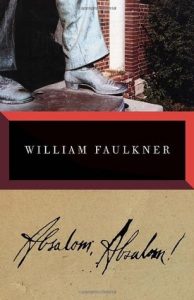Reader as Witness
In this chapter in White Spaces, the reader plays the character of a witness or judge rather than being an active participant in the story. The narrator refers to research the reader has done and the belief system that has created. He then goes on to juxtapose this belief system saying, “my own experience…stands in absolute contradiction to your conception of existence.” Pressburger uses this supposed contradiction as a way to justify fully explaining the narrator’s ideas and how he came by them. Because I, as the reader, am told that the beliefs assigned to me are wrong, Pressburger is bringing me into the story as I try to weigh the evidence.
Pressburger uses an interesting segue between the second person introduction of the story and the first person telling of the action of the story. He writes, “Of course I want to take a little time before telling you about me, but I also want to try and make you understand how much I was influenced by your research.” This statement is the equivalent of the hug and roll where the narrator compliments “my” ideas which endears me to him but then releases me to watch him elucidate how he has expanded on them and found his own way.
The narrator then does not refer to the reader again except in two passing references to the reader’s research and once to ask if I remembered Mrs. Polak and a conspiratorial reference, “We know, dear brother, what really lies behind feeling shy, feeling ashamed, blushing, do we not?” Each of these references keeps the reader in the position of engaged observer and reinforced the supposed relationship. The reader and narrator are supposed to share at least thirty-five years of memories.
Addressing the Reader
It is strange at the end of this chapter when the narrator again addresses the reader. He says, “You can meet me in the market where you’ll find me sweeping up the dirt, moving boxes and wooden cases around.” This made me wonder where the reader was to have encountered the narrator in the first place.
Pressburger has assumed that his reader is willing to give up their own point of view to get this second person narration to work. He also has to create a persona that is compelling enough for the reader to want to assume. When he addresses the reader as “you,” he has a specific character in mind and he is asking the reader to take on the role of that character. In my novel I haven’t yet figured out exactly who the “you” is. By setting up a fuller character for the reader to inhabit, I can assign the reader a more complex role that he or she can then choose to inhabit or not.
If this review made you want to read the book, pick up a copy of The Law of White Spaces from Bookshop.org. Your purchase keeps indie booksellers in business and I receive a commission.
